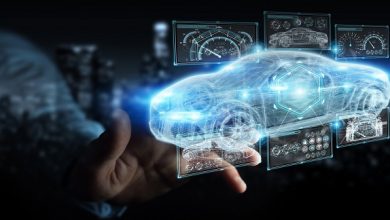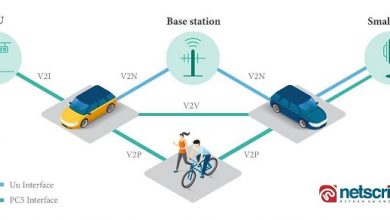Chips, Modules and Automotive Electronics

Do the word “Chips” lately send tremors down your supply chain (the spine of any manufacturing activity)? If no, then you must be extremely lucky and a super planner with extreme foresight!! Nonetheless, one need not be worried – it’s a completely temporary phenomenon which will soon pass.
The chips or semiconductor technology has overcome serious challenges in the past – both in terms of technology and markets – and is now advancing at the pace of a tornado. Everyone is interested to have a slice of it and reign supremacy amongst equals. Needless to say, the investments that are being solicited by various countries with an array of incentives, subsidies and other “carrots” speaks volumes of the scheme of things. Ever since Robert Noyce, over 60 years ago, introduced the first integrated device (preceded by the invention of the transistor) at Fairchild, the evolution of this “wonder sand bundle” has been stupendous and in today’s reality there is no product or use case untouched by it. Think of the ubiquitous hand phones, routers, massive Data centres, the electricity grid, transportation elements or even the toys that our children play with including the factories that manufacture all these are powered by Chips. The list could go on, but in the context of this article will restrict to Automotive.
Dawn of Electronics in Automotive
Every one of us at some point in time have made use of the automobile in some form or the other as part of our daily routine. Appropriate to recall Daimler’s invention of the gasoline engine, Benz patenting his 3 wheel motor car – Model No. 1 – and much later Ford effectively pioneering (for automotive) the fabled moving assembly-line for mass production of the Model T making it more affordable. The kick-off to the usage of electronics in automobiles go back to 1955 when Philco’s all-transistor (12 to be precise) radio was loaded onto the Chrysler’s Imperial models. This was followed up by the use of silicon diode rectifiers in the lighter Alternator which began to replace the Generator enabling handling of larger electrical loads. Much research activities were conducted across various manufacturers in the US, Germany and Japan leading to improvisation of current issues faced then by their vehicles. Ignition systems became available with discrete solid-state electronics reducing mechanical wear improving engine efficiency. The next big success with use of electronics was the introduction of a computerized ABS helping improve vehicle safety. Meanwhile, the MOSFET was invented that revolutionized the semiconductors field and the Microprocessor (though the actual originator is possibly clouded) was born – the brain (or some may say heart) of most electronics systems. This is considered as one of the watershed moments in the engineering world and the emergence of the semiconductor giants that all of us know today.
With the invention of the transistor and microprocessor, internal combustion engines transformed from pure mechanical to electro-mechanical to fully electronic control solutions fuelling the quest for efficiency and optimization as well as meeting the increasingly stringent CAFE norms. It indeed has been a long journey since General Motors introduced the first microprocessor based electronics system in a car around 1980 though Electronic Control Module (ECM) existed prior with limited electronics. Further ahead, other areas like Airbags, Transmission Control, Navigation, Infotainment, Safety and comfort applications evolved within a vehicle with its own control unit. The Electronic Control Unit (ECU), with time, has advanced into a compact and complex module or sub-system that continuously challenges the boundaries of existing innovations in automotive electronics. So what is an ECU?
ECUs, as the name suggests, are devices that control specific functions within a vehicle. They are usually built with Chips or Integrated Circuits along with other electronic components that typically receive various inputs, process them as per specifications and provide necessary instructions for an appropriate output response. Apart from the hardware content, each ECU has specific software or firmware with various interfaces and communication protocols to effectively execute its given function. Effectively, it is an embedded system that controls the electrical systems internally within a vehicle and of late progressing to connect with other vehicles and infrastructure as well as the cloud. Typically, modern cars have about 70 ~ 150 ECUs packed in their architecture based on the features and options available on the vehicle. Some of the more common ECUs found are Engine control module (ECM), Body control module (BCM), Airbag module, Powertrain control module (PCM), Transmission control module (TCM), Telematics Control Module, Suspension control module (SCM), Infotainment Module (IVI), Battery Management System (BMS), etc. each with their own processor, memory and software. Murata offers a large selection of Auto grade devices that constitute key elements of these modules.
Common ECUs found in a vehicle
Device availability from Murata by application
Semiconductor technology development
While the automotive system development is complex in itself with seamless inter-operability amongst the various sub-systems; the semiconductor technology has to keep pace and stay ahead in the innovation cycle to complement the efforts of the automotive OEMs. It would be good to note that the chips required for automotive applications are a notch higher than the consumer products thus driving higher cost to meet these specifications; some of the key attributes are as below.
Higher Temperature requirement – typically need support from -40°C to 125°C
Reliability requirements – AEC Q100
Functional safety – ASIL safety levels
PPAP – Consistency and change/risk management
Semiconductor technology has transformed exponentially in all aspects – transistor density, packaging, form factors, manufacturing processes, et al – the demand for more innovation from almost all applications pushing the levels of automation has kept surging the revolution in chips development. This demand has leapfrogged the search for newer materials to transcend the saturation of Silicon as it possibly reaches the limits of Moore’s Law. Research in semiconductors materials are on a fast pace with new compounds like GaN, Graphene, Pyrite being developed as potential replacement for Si and GaAs. This nanoscale chip then necessitates improvement in thermal management as they get much smaller, packed with multi-fold powerful features creating hotspots impacting performance. Researchers at UCLA are discovering materials like Boron Arsenide (BAs) that can be integrated into the semiconductor chip design for a better thermal management at full load performance in future electronics packaging. Chip technology will continue to evolve with the latest news on the 2nm announcement from IBM and MIT/TSMC spelling out some breakthroughs to the next logical node. Are we on the path to an angstrom (Å)!!!
Transformation of vehicle architecture
Meanwhile, the vehicle itself is metamorphosing into a smart intelligent machine that would serve many other facets of human needs other than just being transported. The machines are becoming green, mean, lean, self-driven and fully connected. Vehicle architecture, with every new generation and functionality enhancement, thus far has created a rather large and complex maze of networked ECUs offering no more room for flexibility and expansion. This leads to the tipping point of reconsidering the vehicle architecture as it becomes unsustainable to add more control modules within for new features. Automotive OEMs and Tier 1s are already working on alternate vehicular architectures with the semiconductor manufacturers driving in sync and propelling industry collaboration to define protocols and release chips that will enable these new Centralized architecture. Many of us would be now familiar with terminologies like Domain Controllers and Zone controllers, which are driving the shift in vehicle network architecture. Announcements are in place for Domain controllers being adopted by some of the well know OEMs/ Tier1 and even our own indigenous automakers are beginning to ponder on the transition. Domain controllers consolidate features from multiple ECUs into a single domain enabling better efficiency, merging functions and SW platforms speeding communications as well as OTA updates for future expansion. Zonal architecture is a step ahead in integrating multiple unrelated functions with a spatial orientation thus compacting wiring harness, connectors and reducing weight. Expectation is that fewer controllers with same processor architecture will be present for software compatibility and platform migrations for new feature integration. The progressive path would be to consider a full Zonal architecture in the future, but will it be prudent to partake a hybrid model to channelize and optimize the benefits prior to a full transition. Would this lead to a fully centralized processing architecture and if so when and will the automotive industry embrace it? Coupled with the developments in the telecom world rolling out 5G (6G) networks, AI & ML as well as availability of sophisticated sensor devices, the march continues unabated. So much so for the module evolution.
A quick glimpse of the automotive module offerings in the connectivity space for some target applications from my company, Murata Electronics.
Application areas for Murata Automotive Modules
Innovation and feature enhancements are not just in the domain of the 4 wheelers or CVs, the dense population of motor cyclists in our country are not far behind in the demand for technology imbibement into their joyous ride on 2 wheels. One such solution that we offer is a bespoke design of a fully connected cluster with Telematics for any OEMs/Tier1 in partnership with a leading Chip innovator in the automotive domain; a quick peek as below.
Scalable Cluster/Telematics Connectivity Platform Concept to Prototype to Mass Production
The way ahead
Automotive Electronics trends clearly indicate the age of the fully connected car, largely electric and autonomous, spurring the demand of high performance semiconductors and modules that will essentially ensure the safety of its own passengers within as well as those outside. The future vehicle is expected to be a “Mobile on Wheels” focussing on the rider experience rather than the driver experience, echoing the need for increased comfort, ambience and productivity. The average semiconductor content within the vehicle is estimated to be around $350 (2x for EV) and expect to go up to $3000 for a fully autonomous vehicle as postulated by some industry reports. Several experts feel that more than half of all automobiles sold will be electric by 2030, which is not so far in the horizon. These new requirements and future aspirations (geo-political included), will drive the creation of a more collaborative eco-system developing highly powerful and integrated devices in multiple technologies – Chips, Modules, MEMS, ranging, batteries, wireless technologies, energy harvesting or even Hydrogen fuel cells. Given the ongoing chip supply situation and new vehicle architectures being defined, Automotive OEMs are increasing direct exposure to work with the semiconductor suppliers, which until now has been the domain of their Tier1, who in turn are considering investments in fabs and chips of their own.
An important aspect, will be the visible changes in the automotive value chain which would transition from the existing Tiers (of suppliers) to a Hub & Spoke model further moving potentially to a matrixed fusion between players (suppliers, telcos, tech giants, OEMs) and product cycle (design to after sales). This will enable the emergence and sustenance of new players in the eco-system as well as the need for crafting relevant business models. Some of these include shift to online sales, pay per use, subscription models and most importantly monetizing the enormous data that would be generated in the connected era that may realize up to a whopping 50% of the revenues. Software will play a key role in the advancement of vehicles and in today’s car there is approximately 100 million lines of code. As vehicles become increasingly automated and software defined (on a lighter vein supported by hardware), there could be close to 500 million lines of code required to smoothly run tomorrow’s cars. All these will propel several new entrants into the eco-system raising the demand for strategic multi-level linked partnerships within this playground for the best user experience of their patrons.
In conclusion, there seem to be a dream run awaiting all participants in this space, with a better and safer world but a long road ahead. Brace up, interesting and exciting times !!
Author:

Rajesh Gopalakrishna
Assc General Manager
Murata
Rajesh heads the Product Marketing, Application Engineering and Business Development activities of Murata Electronics India. Is focussed on fostering partnership with design houses, semiconductor companies and system integrators in the ecosystem to provide innovative technologies and solutions in the Mobility and IOT world. He has prolific experience and understanding of the Indian electronics industry leading the market efforts of several semiconductor companies previously.
Published in Telematics Wire




